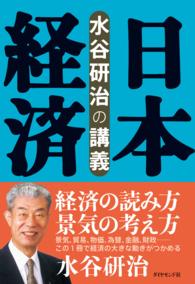Description
The four sections in this Third International Handbook are concerned with: (a) social, political and cultural dimensions in mathematics education; (b) mathematics education as a field of study; (c) technology in the mathematics curriculum; and (d) international perspectives on mathematics education. These themes are taken up by 84 internationally-recognized scholars, based in 26 different nations. Each of section is structured on the basis of past, present and future aspects. The first chapter in a section provides historical perspectives (“How did we get to where we are now?”); the middle chapters in a section analyze present-day key issues and themes (“Where are we now, and what recent events have been especially significant?”); and the final chapter in a section reflects on policy matters (“Where are we going, and what should we do?”). Readership: Teachers, mathematics educators, ed.policy makers, mathematicians, graduate students, undergraduate students. Large set of authoritative, international authors.
Table of Contents
Past, present and future dimensions of mathematics education: Introduction to the Third International Handbook of Mathematics Education: M. A. (Ken) Clements.- VOLUME ONE.- SECTION A: SOCIAL, POLITICAL AND CULTURAL DIMENSIONS IN MATHEMATICS EDUCATION.- Introduction to Section A: Social, Political and Cultural Dimensions in Mathematics Education: Christine Keitel.- 1. From the few to the many: Historical perspectives on who should learn mathematics: M. A. (Ken) Clements, C. Keitel, Alan J. Bishop, Jeremy Kilpatrick and Frederick Leung.- 2 Theories for studying social, political and cultural dimensions of mathematics education: Eva Jablonka, David Wagner and Margaret Walshaw.- 3. Understanding and overcoming “disadvantage” in learning mathematics : Lulu Healey and Arthur B. Powell.- 4. Beyond deficit models of learning mathematics: Sociocultural directions for change and research: Cristina Frade, Nadja Acioly-Régnier and Li Jun.- 5. Studying learners in intercultural contexts: Yoshinori Shimizu and Gaye Williams.- 6. Learners in transition between contexts: Tamsin Meaney and Troels Lange.-7. Critical perspectives on adults’ mathematics education: Jeff Evans, Tine Wedege and Keiko Yasukawa.- 8. The politics of equity and access in teaching and learning mathematics: Neil A. Pateman and Chap Sam Lim.- SECTION B: MATHEMATICS EDUCATION AS A FIELD OF STUDY.- Introduction to Section B: Mathematics Education as a Field of Study: Alan J. Bishop.- 9. From mathematics and education to mathematics education: Fulvia Furinghetti, José Manuel Matos and Marta Menghini.- 10. Theories for education: mathematics: Some developments and ways forward: Bharath Sriraman and Elena Nardi.- 11. Research methods in mathematics teacher education: Uwe Gellert, Rosa Becerra Hernández and Olive Chapman.- 12. Linking research to practice: Teachers as key stakeholders in mathematics education research: Carolyn Kieran, Konrad Krainer and J. Michael Shaughnessy.-13. Teachers learning from teachers: Allan Leslie White, Barbara Jaworski, Cecilia Agudelo-Valderrama and Zahra Gooya.- 14. Developing mathematics educators: Jarmila Novotná, Claire Margolinas and Bernard Sarrazy.- 15. Institutional contexts for research in mathematics education: Tony Brown and David Clarke.- 16. Policy implications of developing mathematics education research: Celia Hoyles and Joan Ferrini-Mundy.- VOLUME TWO.- SECTION C: TECHNOLOGY IN THE MATHEMATICS CURRICULUM.- Introduction to Section C: Technology in the mathematics curriculum: Frederick Leung.- 17. From the slate to the Web: Technology in the mathematics curriculum: David Lindsay Roberts, Allen Yuk Lun Leung and Abigail Lins.- 18. Modelling with mathematics and technologies: Julian Williams and Merrilyn Goos.- 19. Technology and the role of proof: The case of dynamic geometry: Nathalie Sinclair and Ornella Robutti.- 20. How might Computer Algebra Systems change the role of algebra in the school curriculum?: M. Kathleen Heid, Mike Thomas and Rose Mary Zbiek.- 21. Technologies for enhancing statistical reasoning at the school level: Rolf Biehler, Dani Ben-Zvi, Arthur Bakker and Katie Makar.- 22. Learning with the Use of the Internet: Marcelo C. Borba, Philip Clarkson and George Gadanidis.- 23. Technology and assessment in mathematics: Kaye Stacey and Dylan Wiliam.- 24. Technology-driven developments and policy implications for mathematics education: Luc Trouche, Paul Drijvers, Ghislaine Gueudet and Ana Isabel Sacristán.- SECTION D: INTERNATIONAL PERSPECTIVES ON MATHEMATICS EDUCATION.- Introduction to Section D: International Perspectives on Mathematics Education: Jeremy Kilpatrick.
-
![Final Cut Proガイドブック[第5版]](../images/goods/ar2/web/eimgdata/EK-1895047.jpg)
- 電子書籍
- Final Cut Proガイドブック…
-

- 電子書籍
- 武藤十夢 誘惑する才女 週刊現代デジタ…
-

- 電子書籍
- 悪魔だった君たちへ(35) DEDEDE
-

- 電子書籍
- 月刊flowers 2021年5月号(…
-

- 電子書籍
- 水谷研治の講義 日本経済



